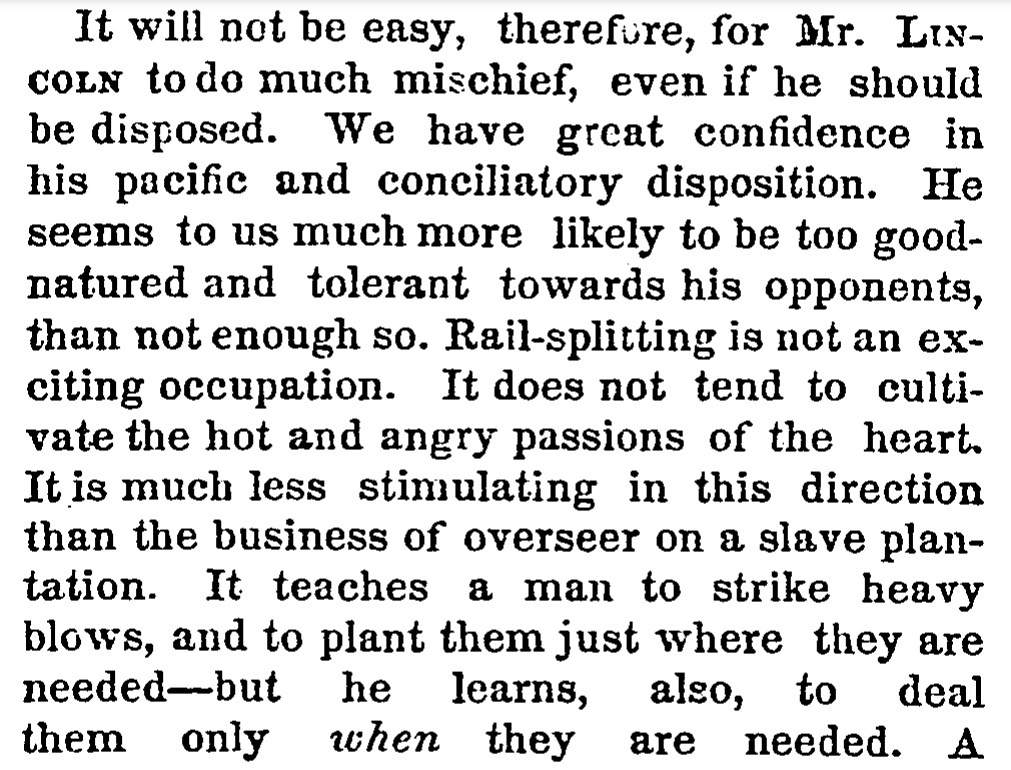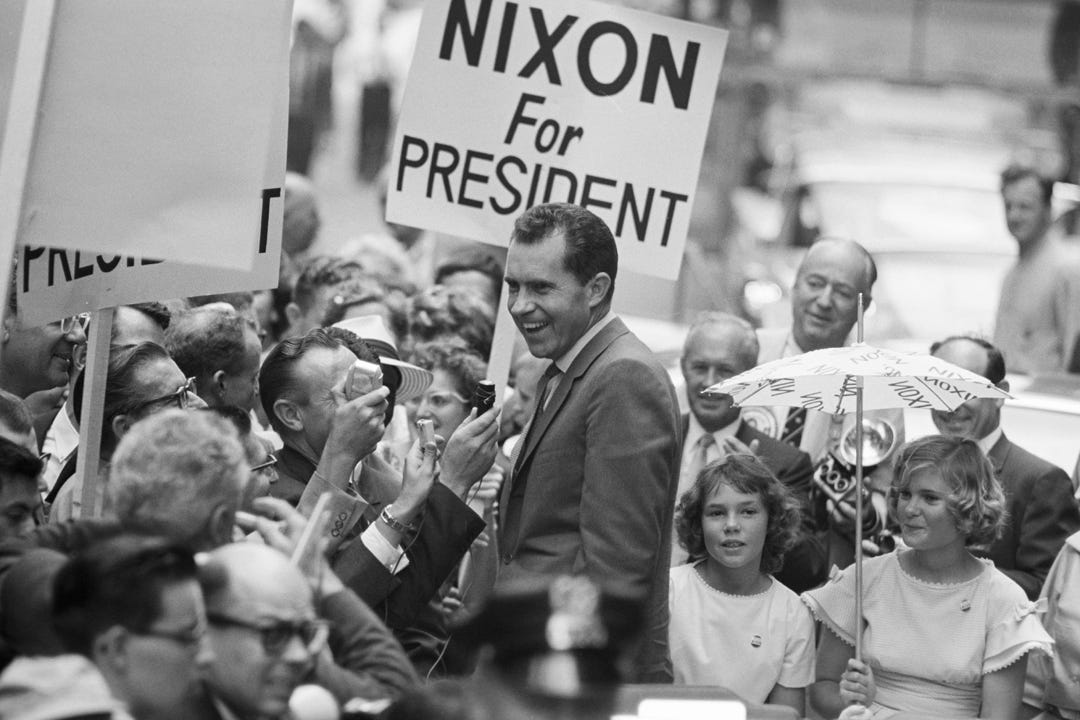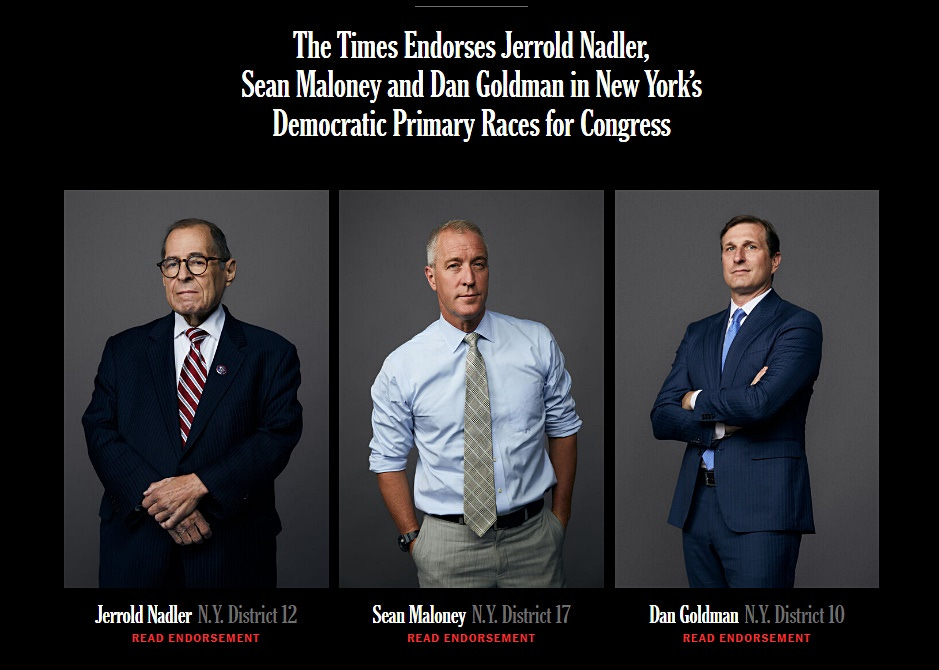Vetted & Approved 👍: The slippery slope of newspaper endorsements (#34)
Should they even be a thing??
🚨 This post may be a lil’ long and might cut off in your email so click here to read it on-site!
When the New York Times put out its endorsement for Abraham Lincoln in 1860, the newsp pointed to his character as a reason for their explicit support, writing assuredly: “We have great confidence in his pacific and conciliatory disposition. He seems to us much more likely to be too good-natured and tolerant towards his opponents, than not enough so.” The paper also argued that Abe’s boring job as a rail-splitter—basically, a person who cuts wood for fence rails—“does not tend to cultivate the hot and angry passions of the heart.” In other words: Lincoln’s political opponents need not to worry if he were elected because he’s probably going to be a pushover.
They were wrong about Abe, of course. It turned out he had enough balls to challenge southern states that threatened to secede from the United States (which they did), leading to an all-out civil war between the Confederacy and the Union. He later declared the Emancipation Proclamation as the country entered its third year of a bloody civil war, which put the country on the path to abolishing slavery and made real the worst nightmare of slave-holding southerners who despised him due to his abolitionist beliefs in the first place.
As evidenced by NYT’s endorsement of Honest Abe more than a century ago, public proclamations of support by the media toward political candidates during elections have existed in the US for quite some time. Since Abe’s election as president, the NYT has put out about 41 presidential endorsements (you can read them all here!) and that’s not counting endorsements related to down-ballot races in New York that the paper has also made.

I guess it would be a good time to note that when a newspaper puts out an endorsement, it is published under the paper’s editorial board which falls within the opinions section—featuring opinion pieces or “editorials” as we call them—separate from the paper’s reported news section, which is a reason why many journalists believe newspaper endorsements don’t necessarily betray the conventional expectation of “neutrality” from the press. When a newspaper says they endorse X, what it actually means is a select group of people at the paper (its editorial board) decided to support candidate X for reasons typically addressed in its endorsement announcement. So, a paper’s endorsement does not represent the opinion of its entire staff! But even with this separation between editorial and news, giving out public support as a news outlet can be a slippery slope.
There’s no official body or standard that regulates political media endorsements so the practice varies by publication. Some newspapers have a history of giving out endorsements but no longer do so, like the Wallstreet Journal—which gave up the practice after 1928 when they endorsed Herbert Hoover who won the presidency that year—or the Atlanta Journal-Constitution, which stopped endorsing candidates in 2009. USA Today on the other hand—among the most circulated newspapers in the US—broke its never-endorse rule and made its first ever presidential endorsement when it backed Joe Biden for president in 2020. “We hope we don't have to do it again, but it seems like one of those break-glass moments where there's a clear and present danger and there's a clear choice,” Bill Sternberg, its editorial page editor, said of the outlet’s decision to finally put out an endorsement.
Some newspapers have even gone back and forth on the issue, like the Los Angeles Times which stopped issuing endorsements for 30+ years when their endorsement of President Richard Nixon for reelection AFTER the Watergate scandal caused a major rift among their staff. The LA Times finally resumed giving endorsements with their support of Barack Obama in 2008 (the LA Times saga is also an interesting counter to the defense that the editorial pages are totally separated from the news section when it comes to endorsements—at the end of the day, they are separate parts of the same machine).

Okay, so most papers just decide their own approach when it comes to putting out political endorsements. But WHY do newspapers choose to endorse political candidates to begin with? Some argue that such endorsements encourage public interest and debate during elections and that not getting involved in the conversation would, in fact, be a dereliction of duty by the press. In terms of whether these endorsements influence election outcomes, research over the last few decades has been a mixed bag but it’s safe to say overall newspaper endorsements don’t seem to hold much sway over how elections turn out (though some studies suggest these endorsements may have more sway when it comes to local races). Hilary Clinton got endorsements from 200+ newspapers in 2016 compared to only six newspapers in the entire country that endorsed Trump, and look what happened with that! (Her husband, Bill, by contrast, received fewer newspaper endorsements compared to his opponent yet won reelection in 1996).
While they may not have a sizable influence on swaying reader opinion, newspaper endorsements are guaranteed to elicit a strong response from the public—which I guess somewhat reinforces the reasoning that the benefit of these endorsements is that they stoke public engagement in politics. Public response toward newspaper endorsements was especially dramatic during the intense 2016 elections. That year, a lot of right-leaning newspapers that had consistently endorsed the Republican presidential nominee in the past were either coming out for—gasp!—Democrat Hilary Clinton, or putting out editorials about not-voting for Trump.
Among them, the editorial board of the Arizona Republic—a staunchly conservative newspaper and among the most read in the state—came out for Clinton, marking the first time the paper had ever endorsed a Democrat in its 126-year history. The paper’s decision made national headlines as sort of a symbol of how the stakes of the election had caused a shift among political circles left and right. But it also ignited severe backlash from the paper’s conservative readership, with its journalists receiving death threats over the Clinton endorsement.
While I do believe these endorsements are mostly borne out of a righteous responsibility toward the public—like all those conservative newspapers coming out to support Hilary because they knew that Trump was in no way fit for the presidency—newspaper endorsements can also be tainted by special interests. The Santa Barbara News-Press, a local paper circulating in California’s Santa Barbara county, was among the few newspapers to publicly endorse Trump, and it’s suggested the endorsement had been pushed by the paper’s publisher, Wendy McCaw.
Similarly, the NYT landed in hot water over its recent endorsement in the crowded race for New York’s newly-drawn 10th Congressional district, backing Dan Goldman, a federal prosecutor and the wealthy heir to the Levi-Strauss empire, for the Democratic primary.
The NYT endorsement immediately raised eyebrows; as accomplished as Goldman may be—he was the top counsel to the House Democrats during Trump’s impeachment trial—he faced fierce competition for the seat: New York Assemblywoman Yuh-Line Niou, a progressive firebrand in the State Legislature; City Councilwoman Carlina Rivera, who had been a top contender for the Council’s powerful Speaker position; and Congressman Mondaire Jones, who the NYT praised in its editorial endorsement of Goldman which described Jones as a “prolific legislator” and a “bridge builder between the progressive wing of his party and its more moderate leadership.” The paper opted to back Goldman instead despite Goldman self-funding his campaign (he dropped a cool $4 million of his own monies into his campaign), a distinction that has disqualified other self-funding rich candidates from receiving the paper’s endorsement in the past.
About a week after NYT’s unexpected endorsement of Goldman, the American Prospect and The Intercept—both left-leaning news outlets—co-reported on the close ties between Goldman’s family and the Sulzbergers… the same Ochs-Sulzbergers who have owned the New York Times since 1896! Most outrageous is the fact that Arthur Greg Sulzberger, chair of the New York Times Company and the paper’s de facto publisher, did not recuse himself from the endorsement process even though his family’s ties to Goldman’s pose a conflict of interest (personally, I think that is a HUGE breach of journalistic ethics, particularly for a legacy institution like the New York Times). It was also disclosed that Arthur has overruled the editorial board’s preferences before. In other words, the person who owns one of the most prestigious newspapers in the country has been meddling in its editorial decisions, bringing into question the paper’s independence and, honestly, cheapening any endorsements it puts out.
[Note: Following New York’s much-watched Tuesday primaries, early ballot counts show Goldman ahead with Niou and Jones trailing in second and third. There are still some 13,000 mail-in absentee ballots that have yet to be counted so the race for Congressional district 10 is still undecided!]
In any case, the practice of newspapers endorsing politicians during elections doesn’t look like it’ll be ending anytime soon. The way publications approach political endorsements has, however, changed a lot and will probably continue to change as the news industry itself continues to go through shifts. Hopefully, for the better.
How do *YOU* feel about newspaper endorsements? Yay or Nay? Sound off in the comments or reply to this email!
TWEET OF THE WEEK: ON RULES OF THE BIBLE 🙏
✨✨✨
SOME THINGS TO KNOW ABOUT
🔥 A look at Finnish Prime Minister Sanna Marin—the world’s youngest elected leader at 36 years old—and how her charmed political career may or may not weather constant criticisms over her off-the-clock activities. | Guardian
🔥 How a “little miracle” in Washington became part of China’s decades-long soft diplomacy efforts with the US 🐼 | South China Morning Post
🔥 The silent killing of Freya, a beloved wild walrus who had made her home on the dock of a marina in Oslo, by local officials has divided Norwegians. | New York Times
🔥 President Joe Biden canceled up to $20,000 of student debt loans for millions of borrowers! 🥳 Additionally, the Department of Education announced a slate of new proposals to begin fixing the country’s out-of-control student loan system. | CNN
🔥 According to one tech company, the only way to remedy the racist abuse that disgruntled white Americans hurl at foreign customer service workers is to alter their voice to sound more white using special voice software. | SFGate
🔥 A bunch of Americans and Europeans are paying thousands of dollars to get customized slogans on bombs aimed at Russians. No, really. | Washington Post
🔥 How do transphobic laws also hurt cisgender girls? A cisgender female student athlete’s sex was questioned by parents in Utah—where trans girls are banned from school sports—claiming “she doesn’t look feminine enough” after beating their daughters in a state competition, spurring an investigation into the athlete’s birth sex. | Mic
If you enjoyed this, you can check out more issues of The P Word here.
Thanks for reading, y’all! If you enjoyed it, do me a favor and give this post a “like” and share it with your buddies!
See ya again soon,
Natasha






